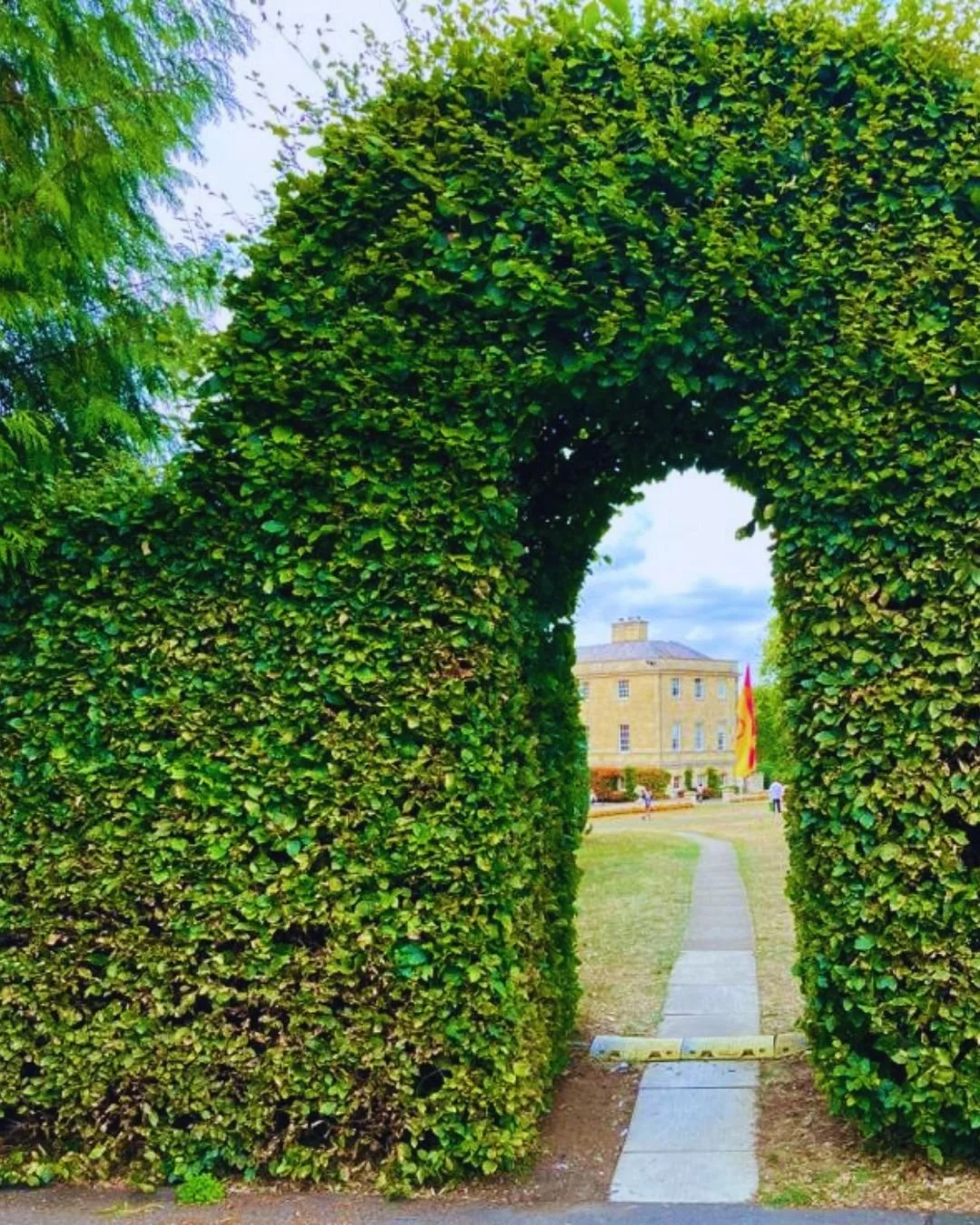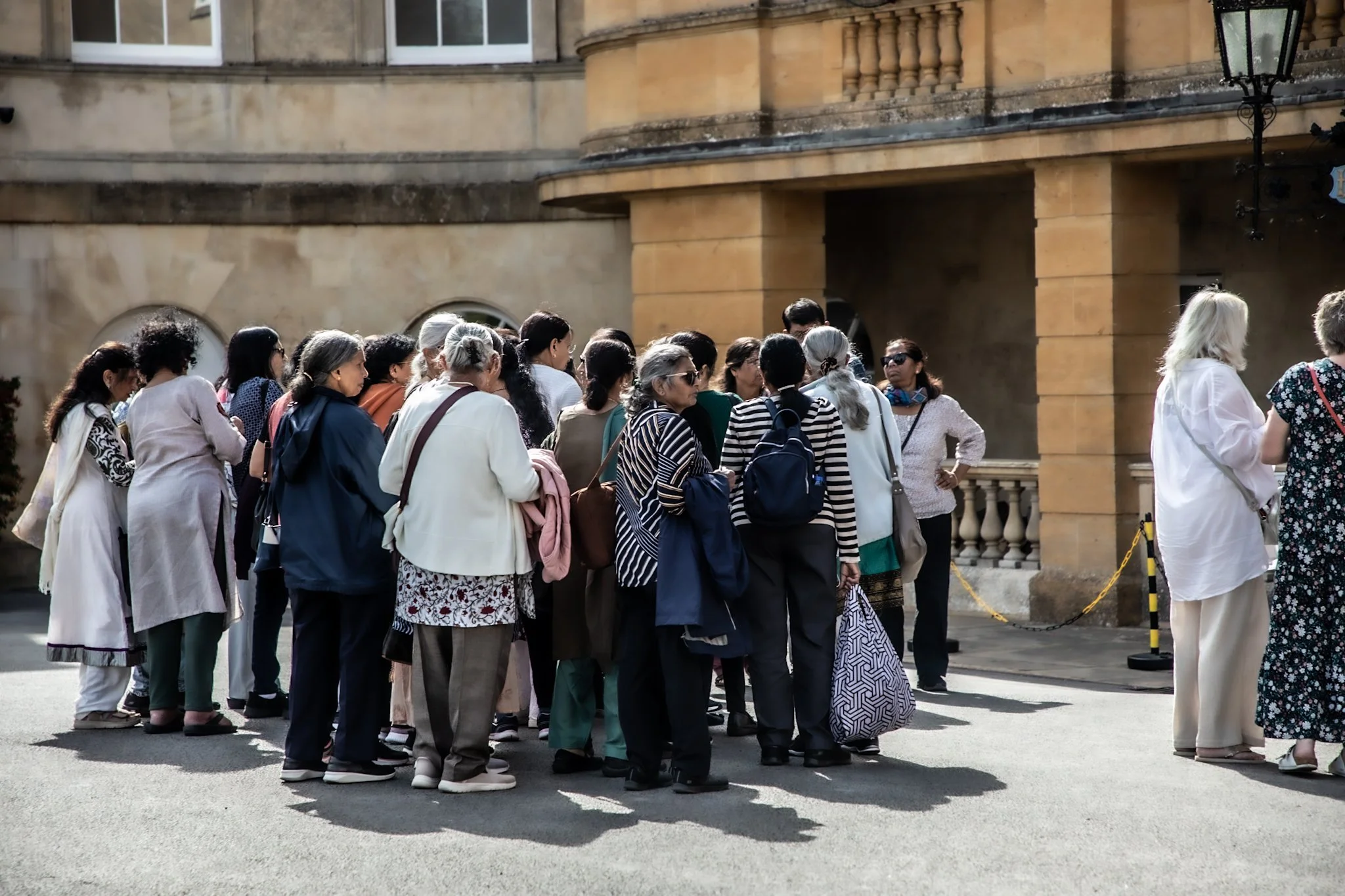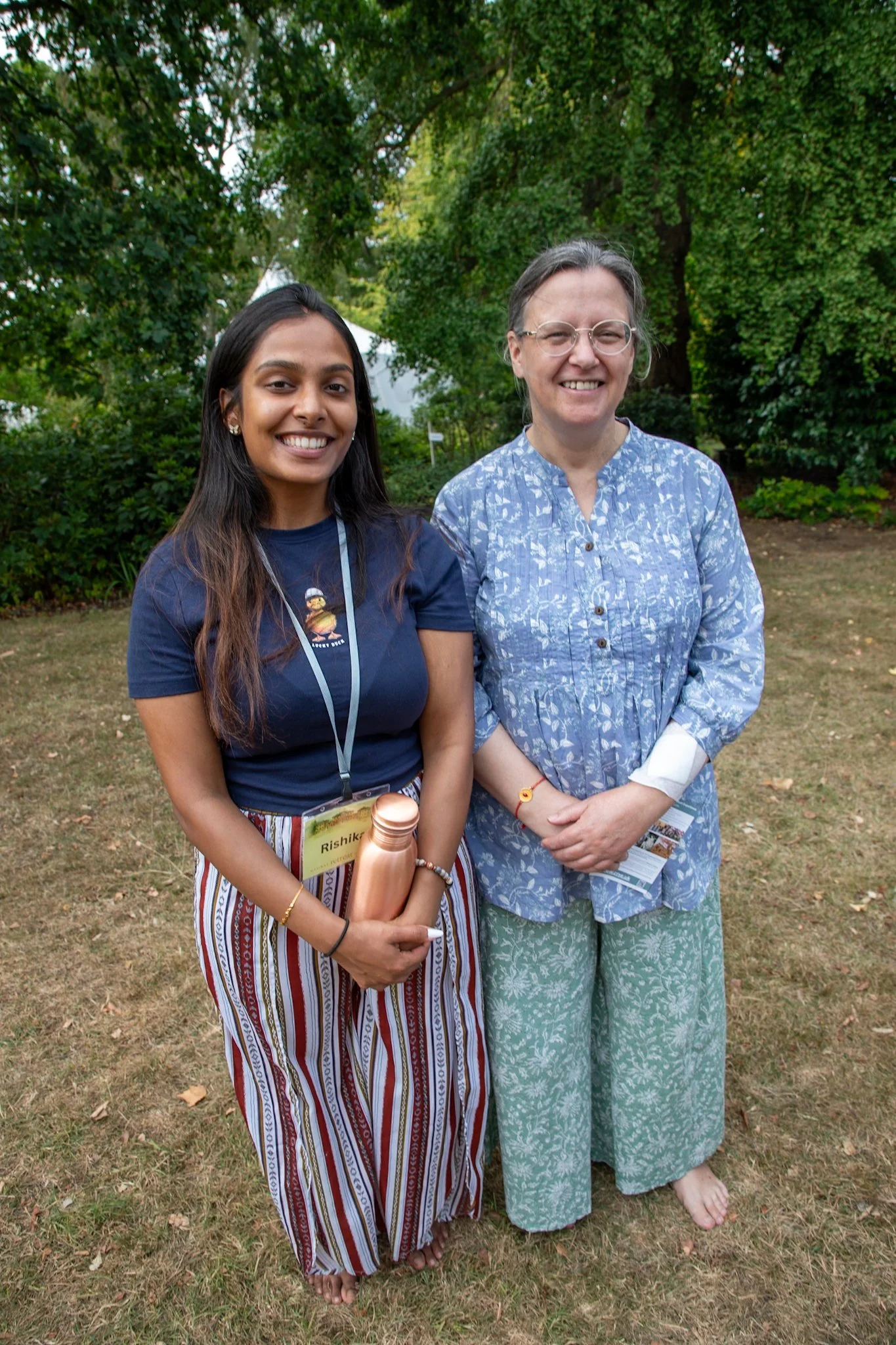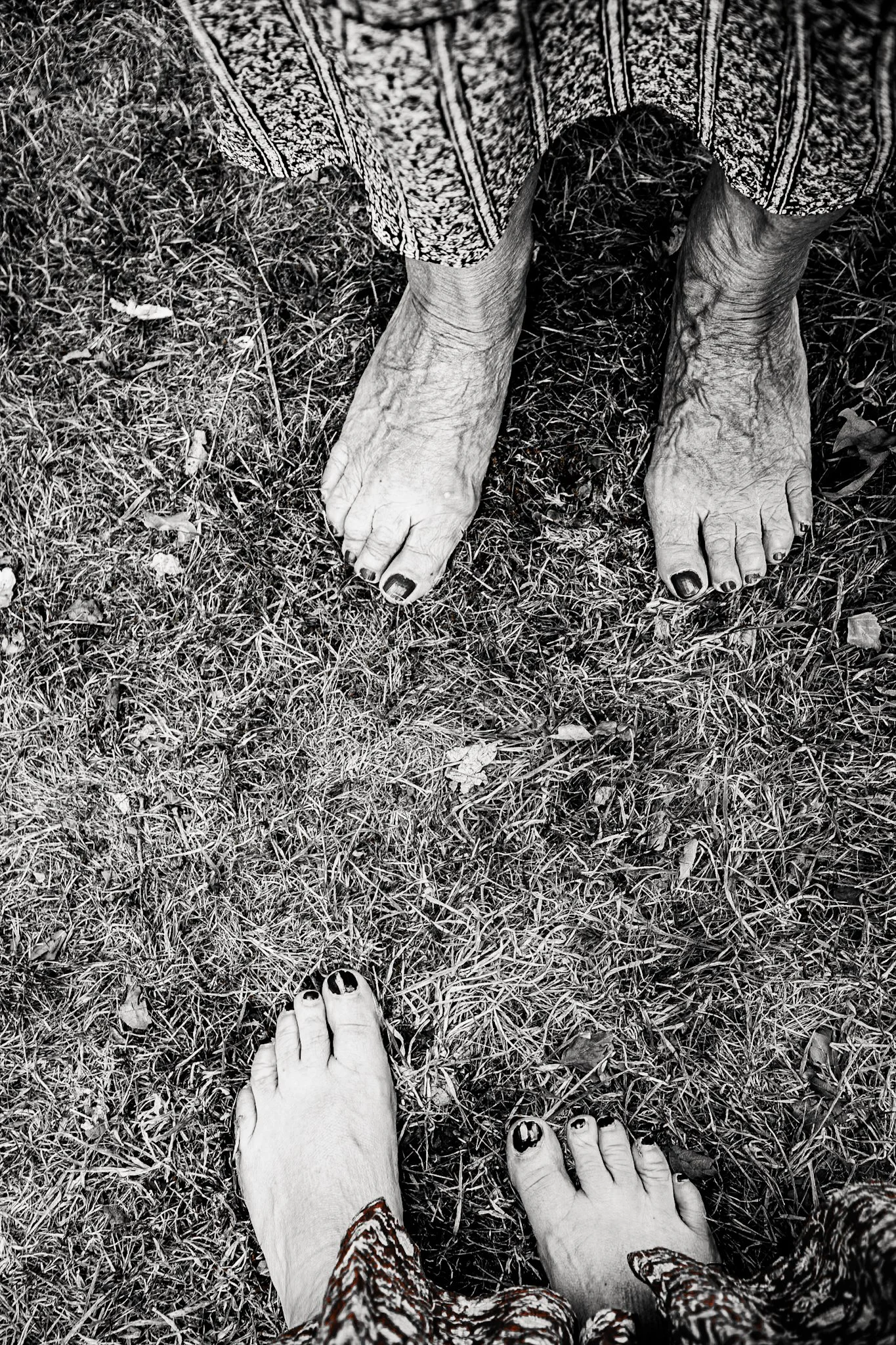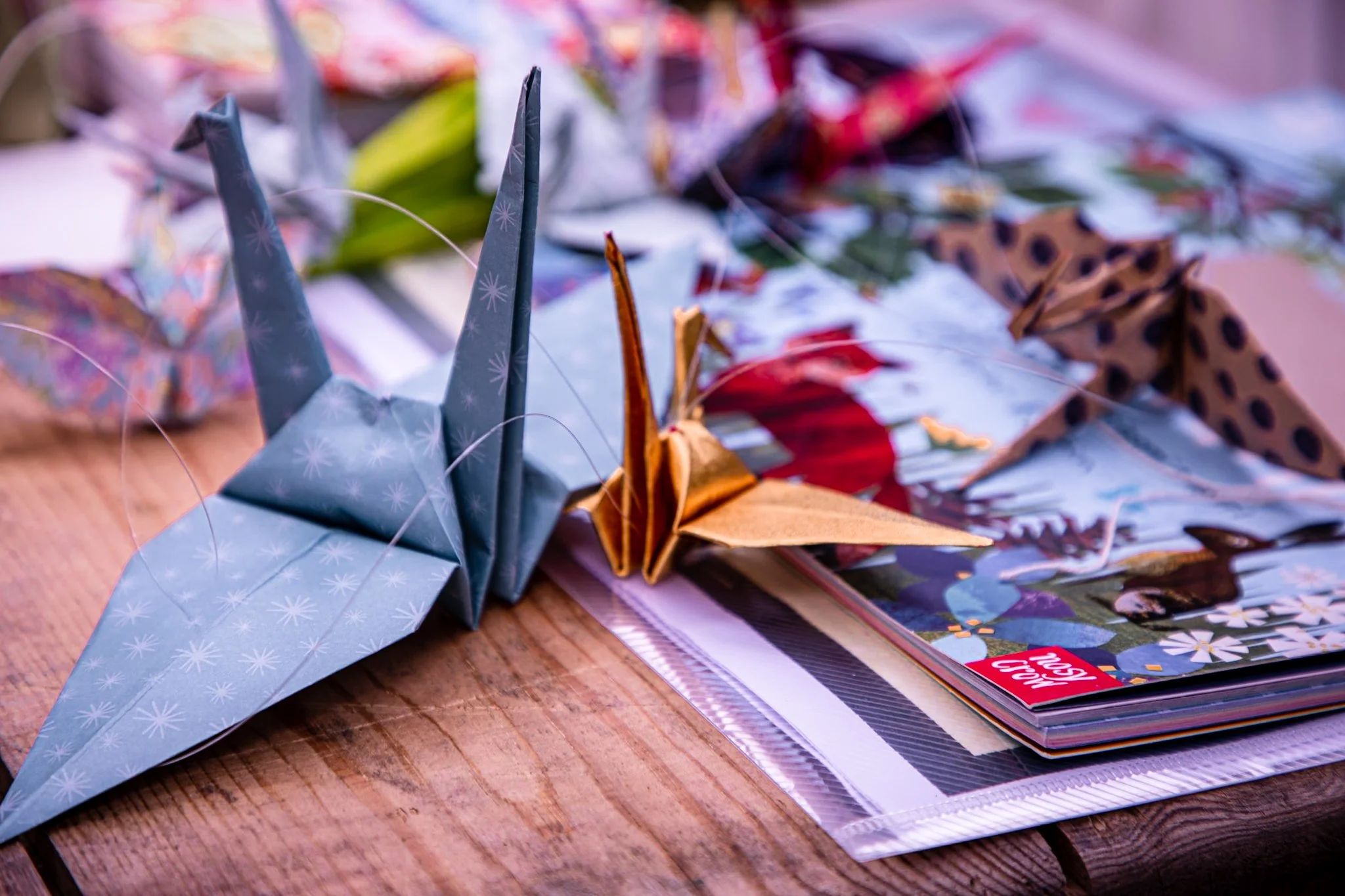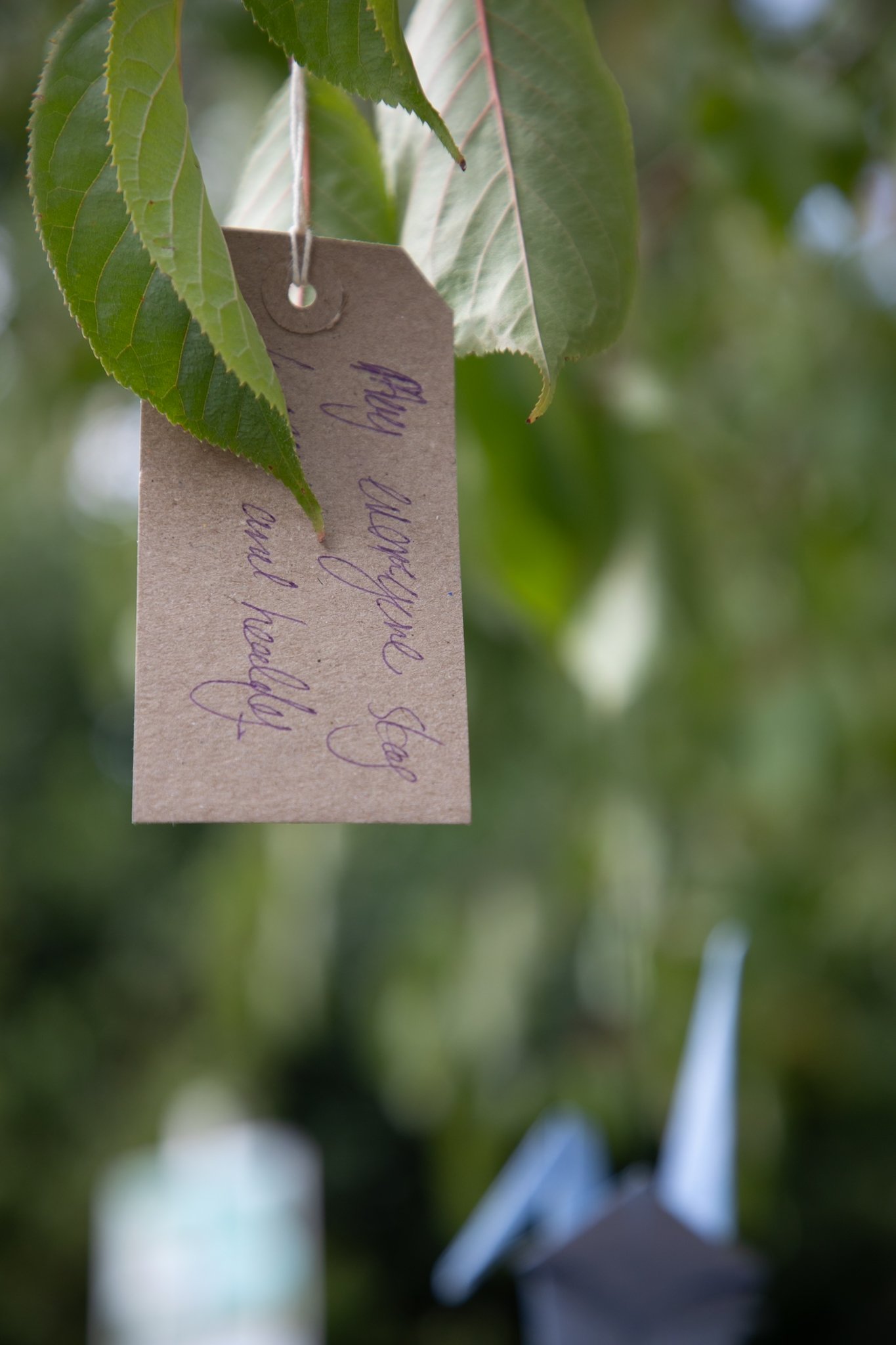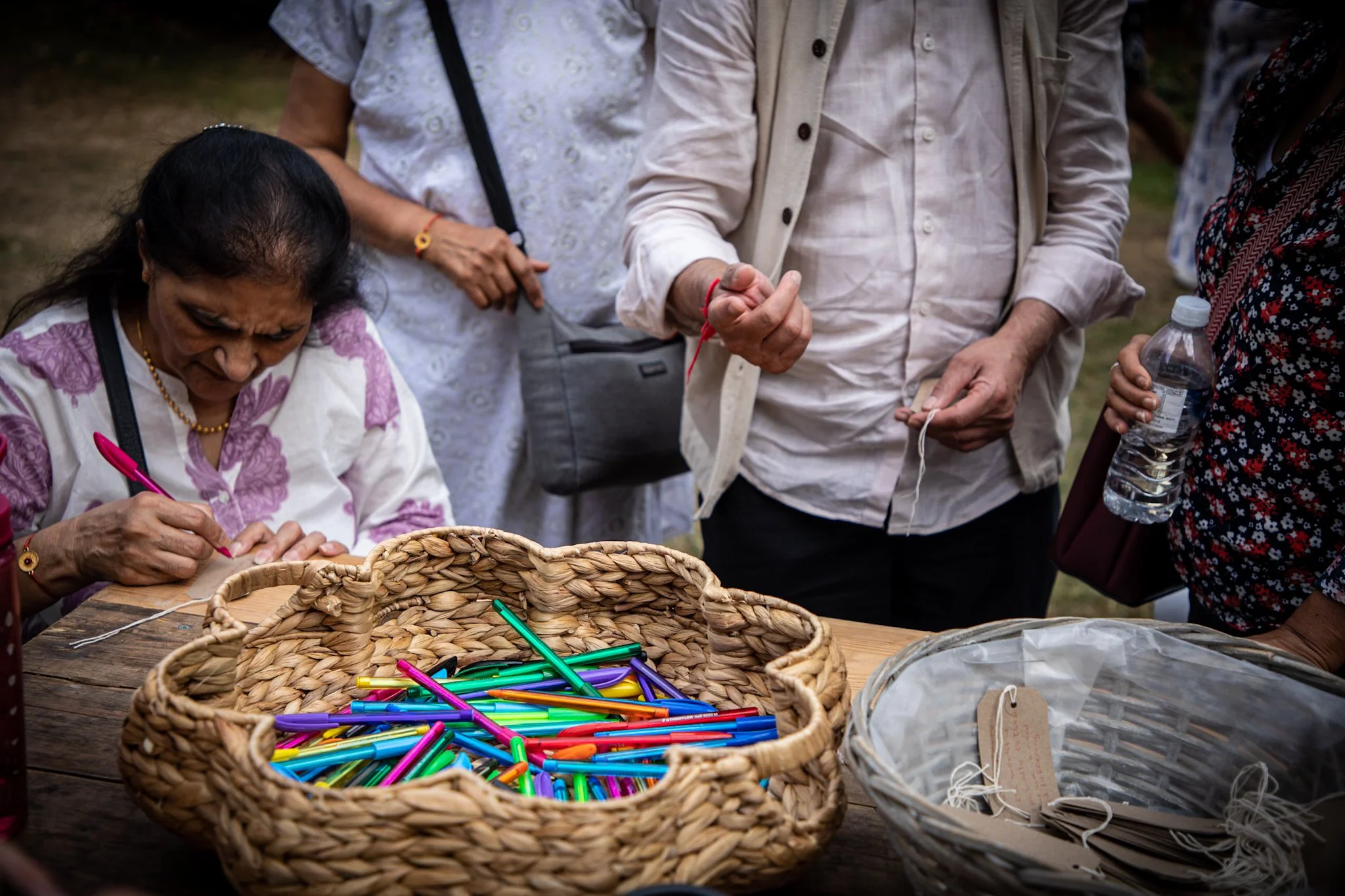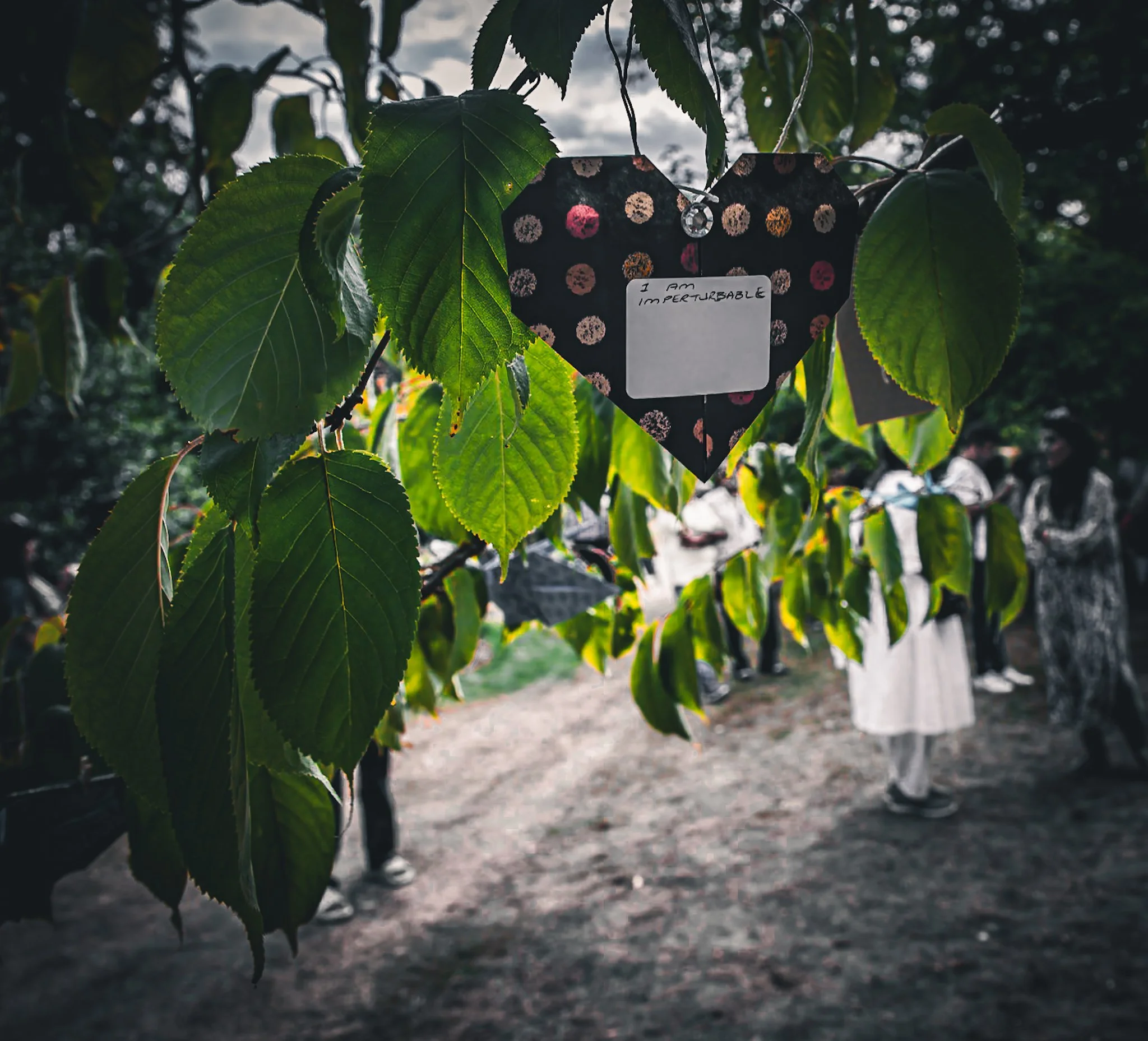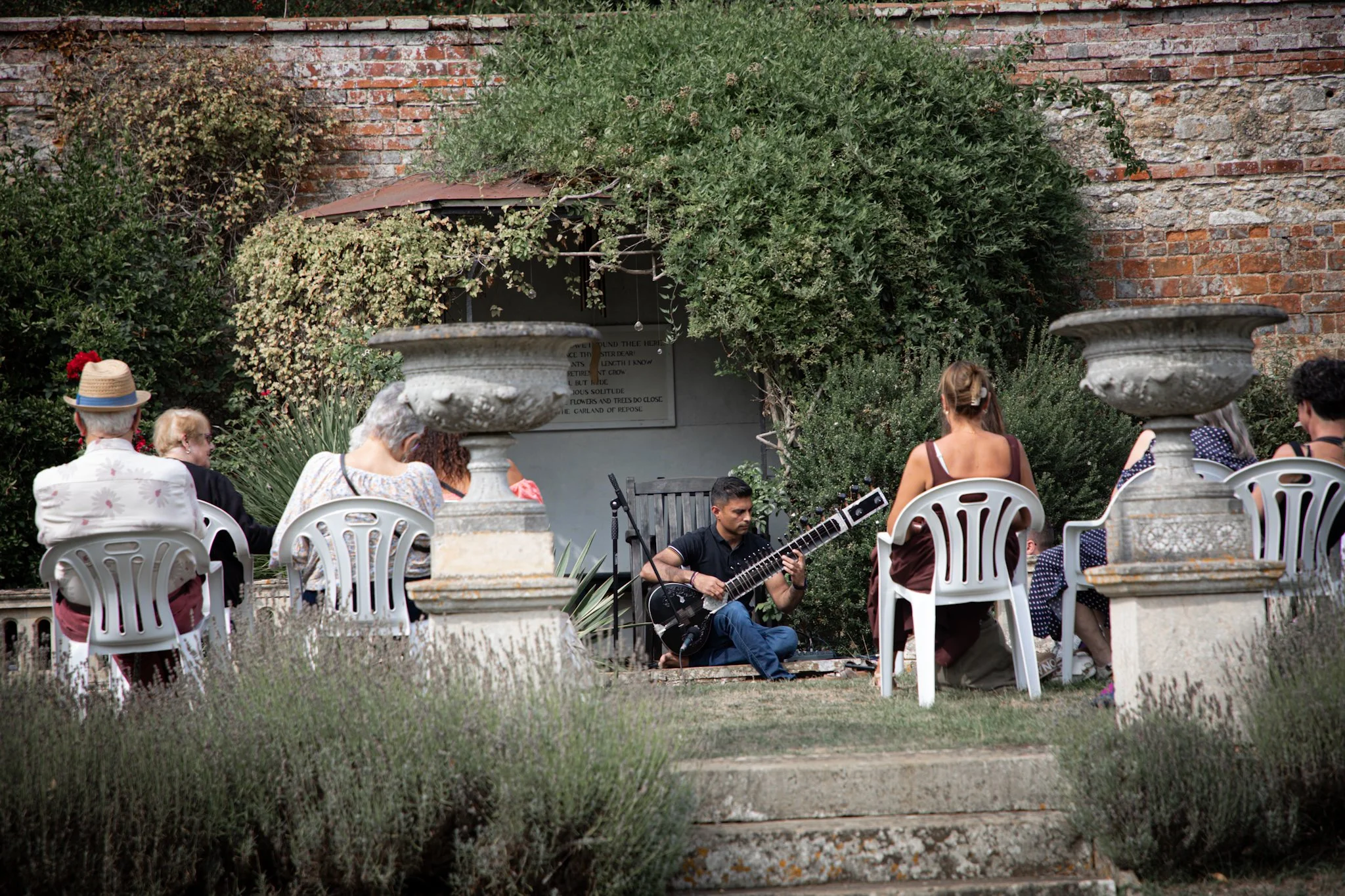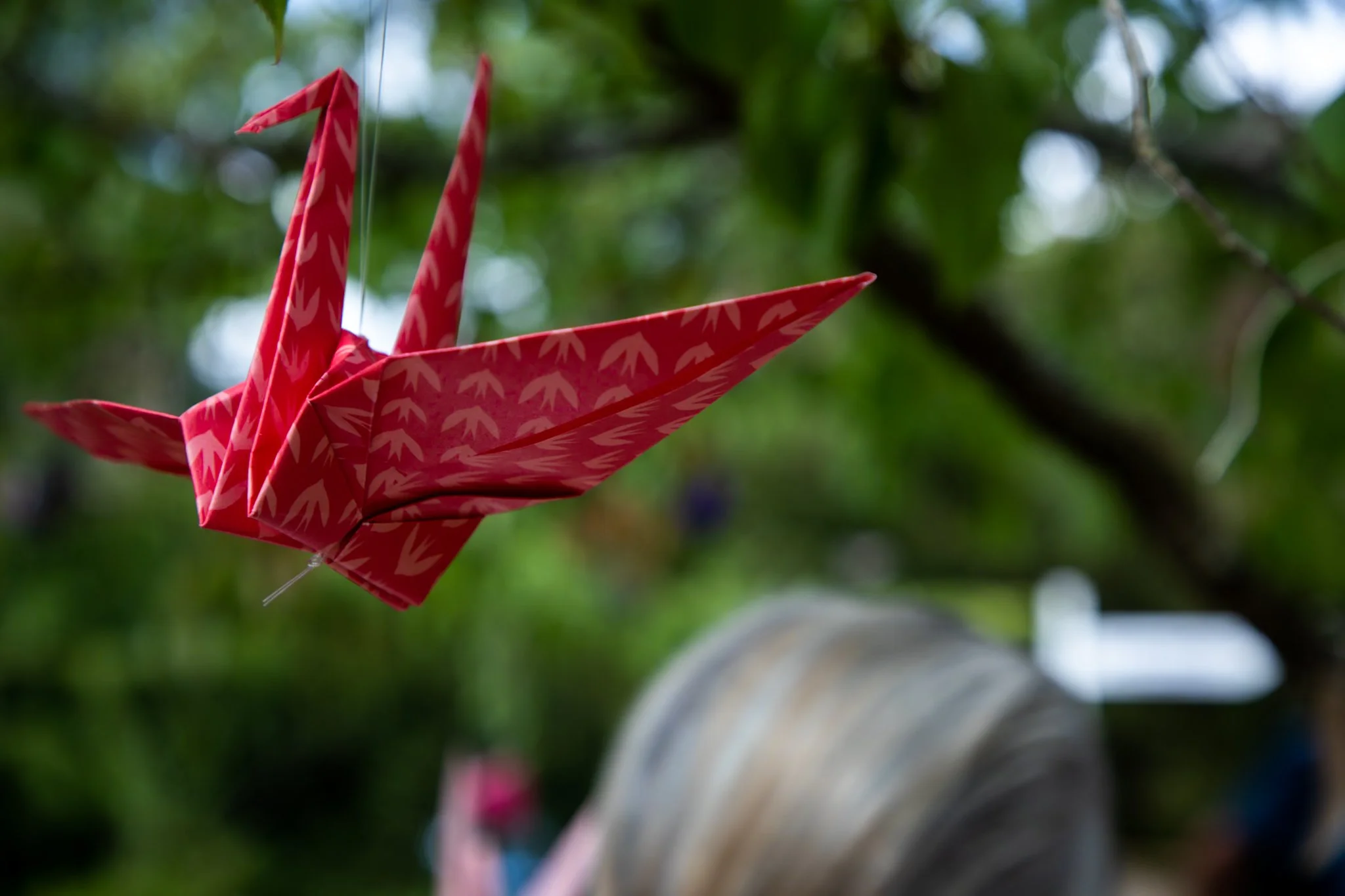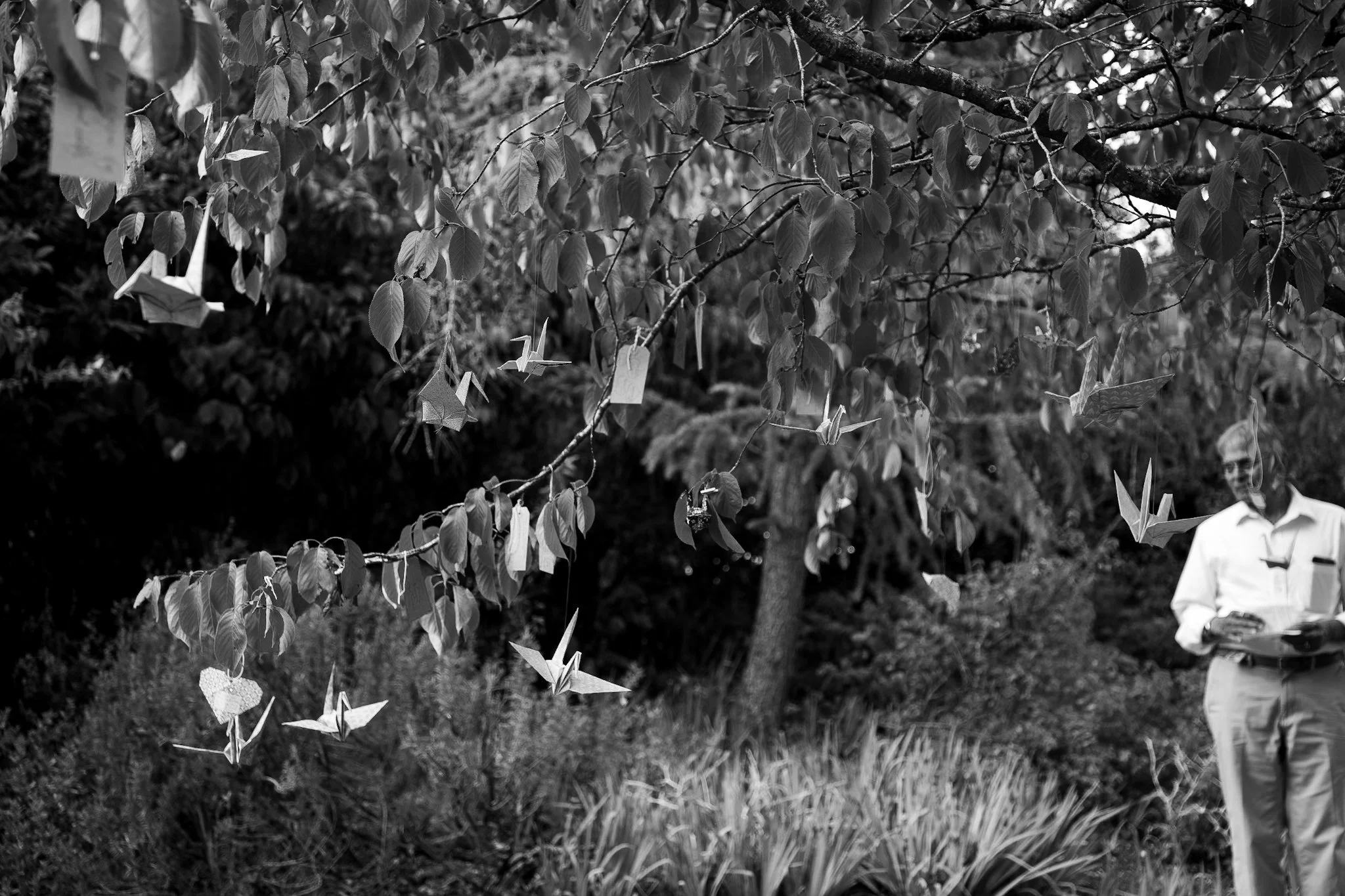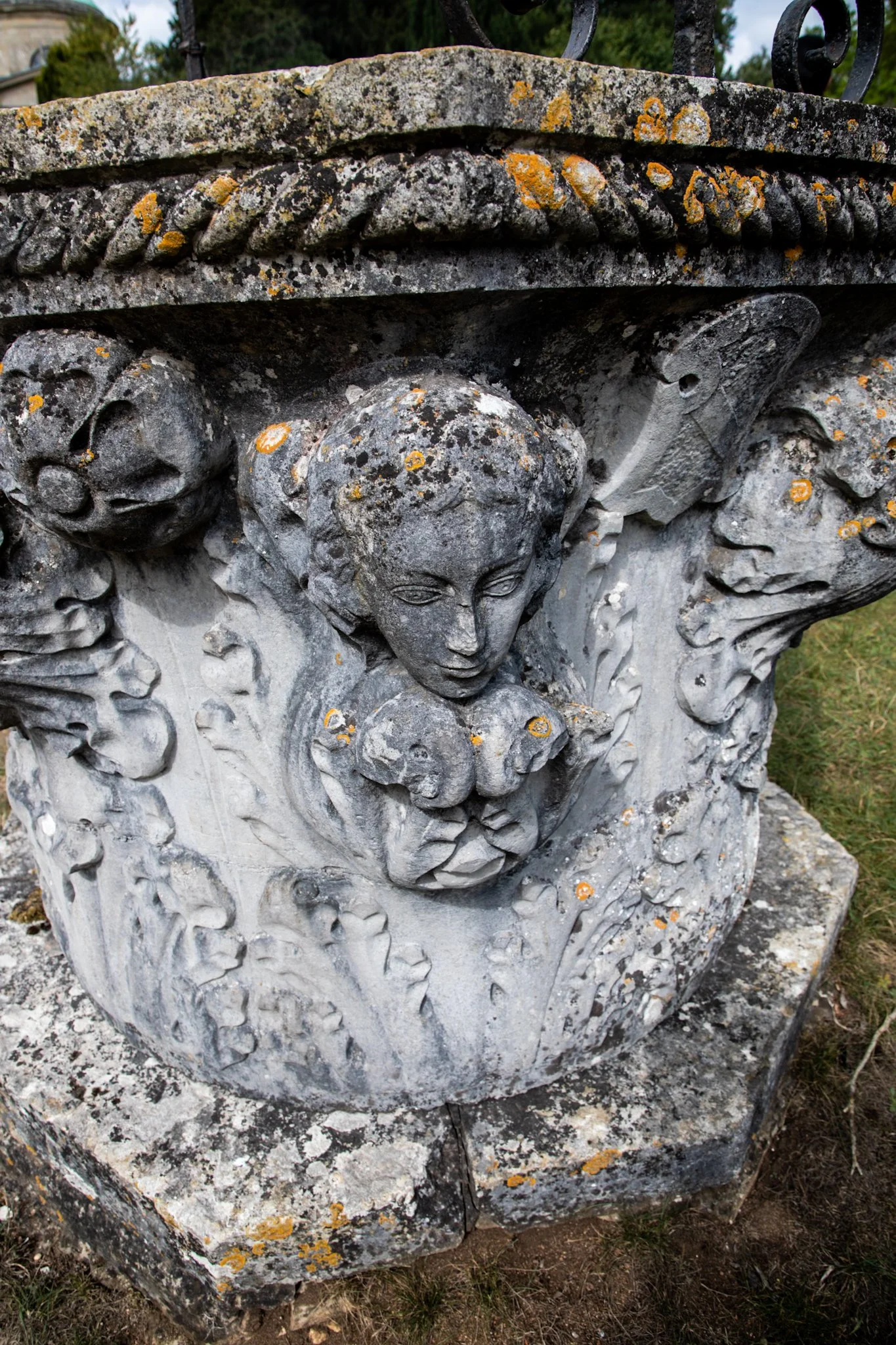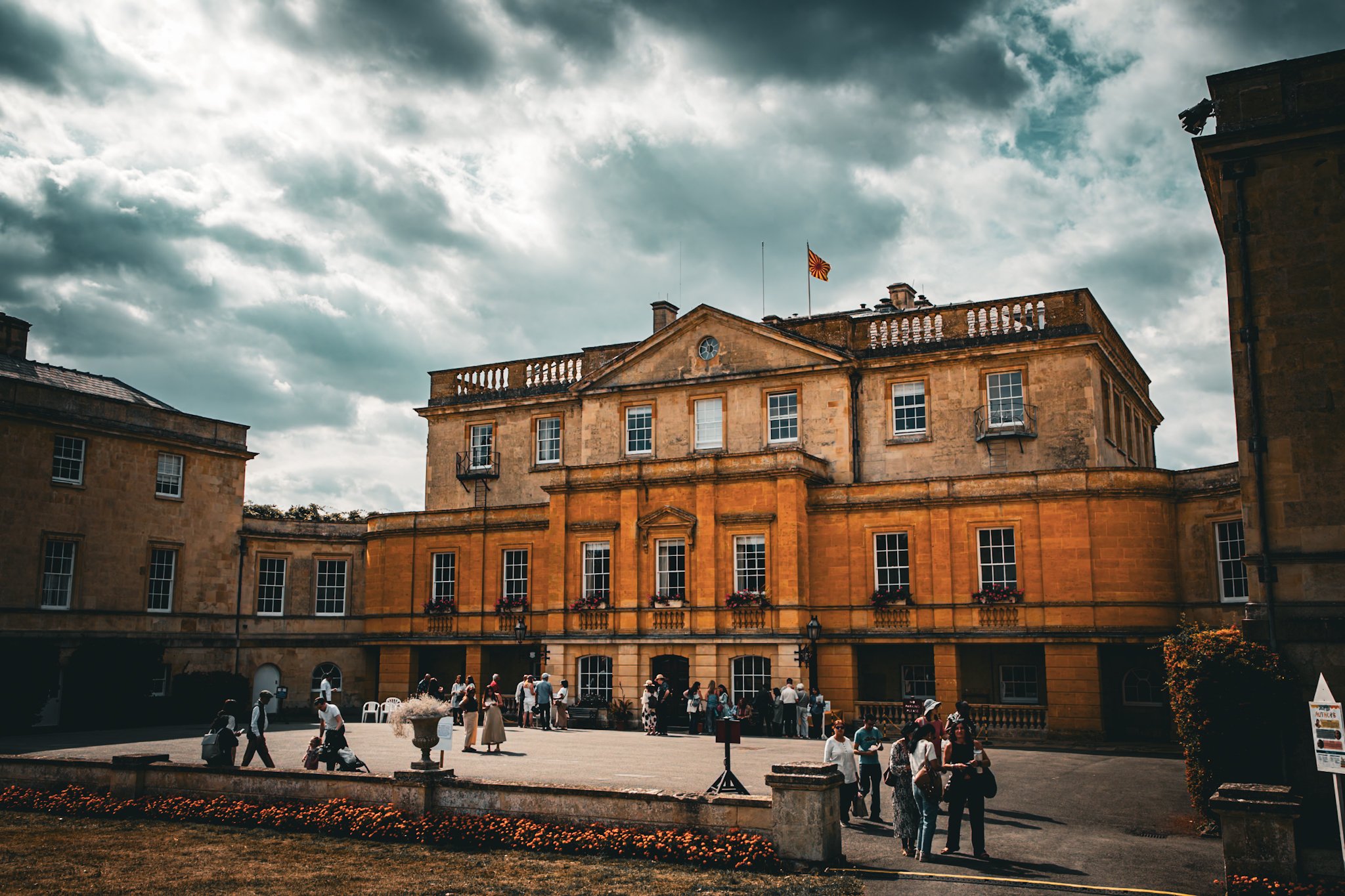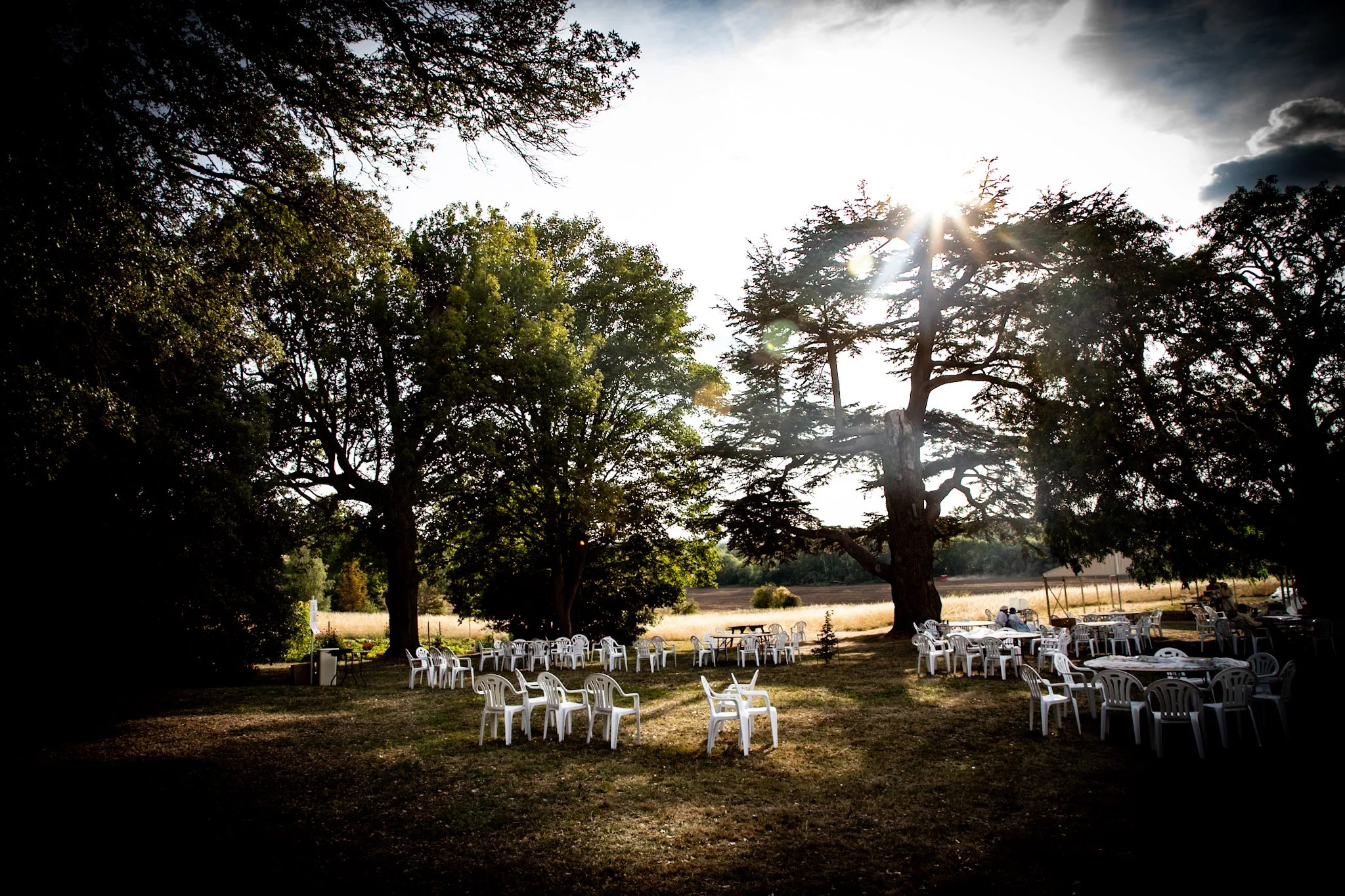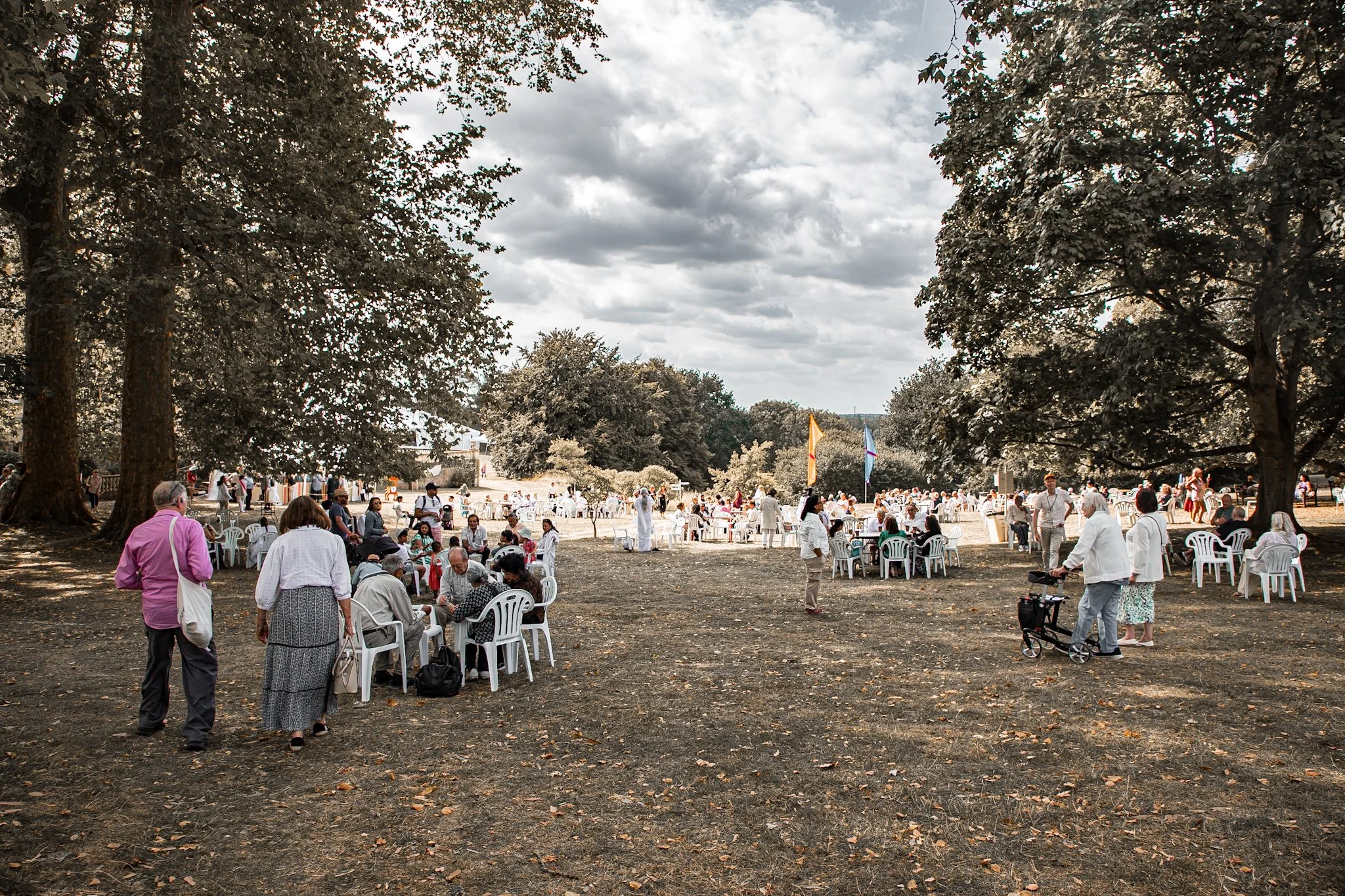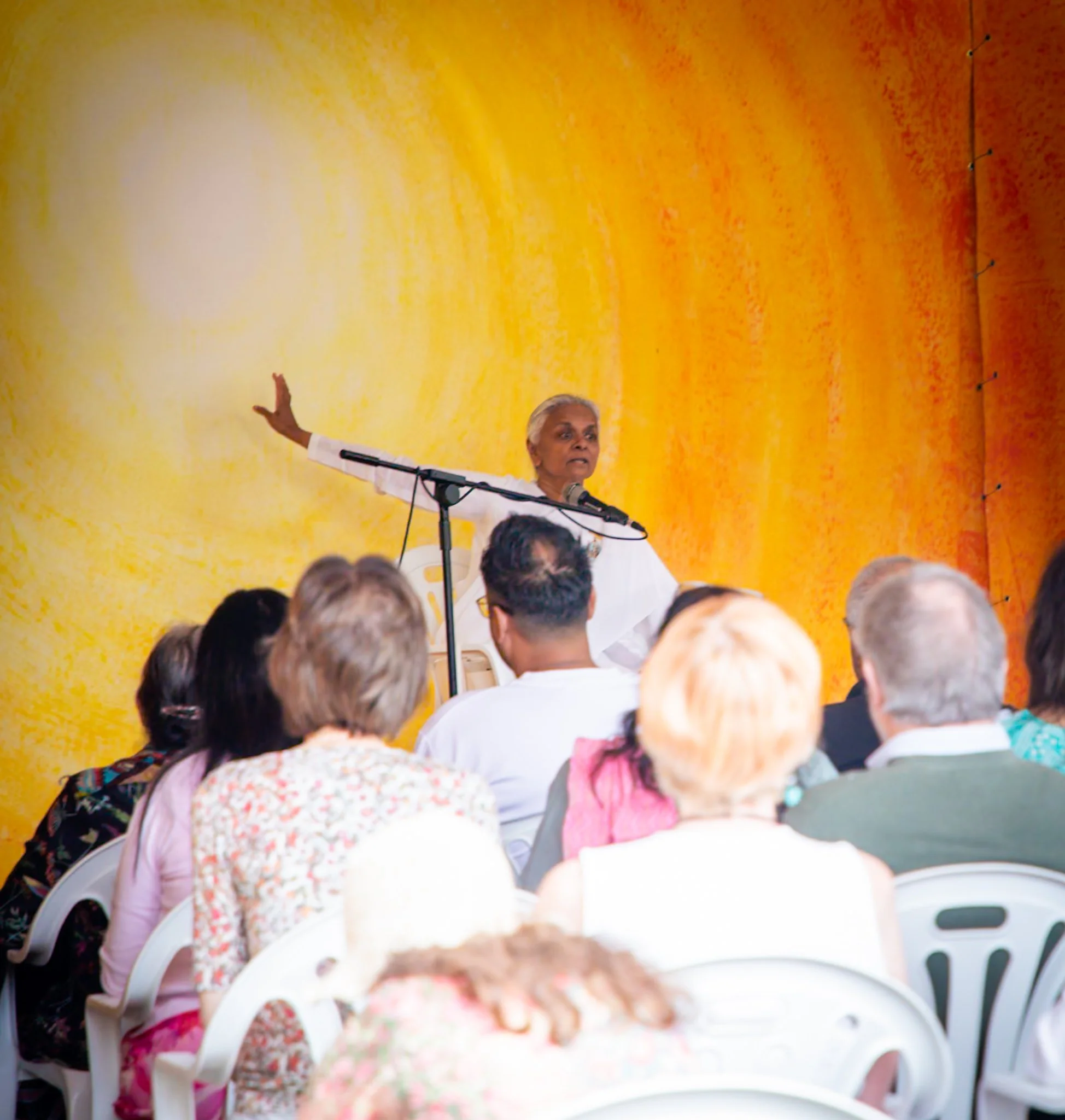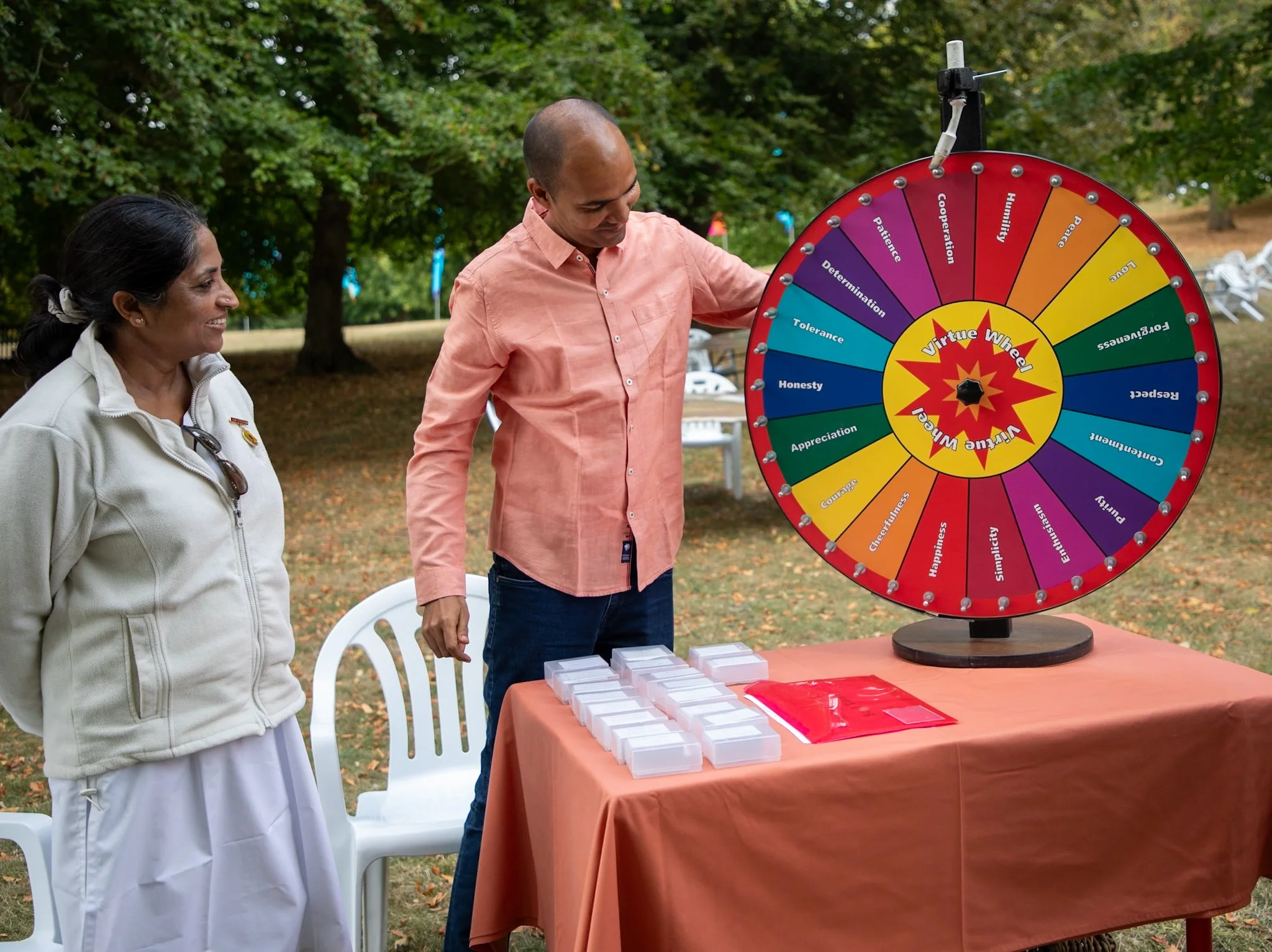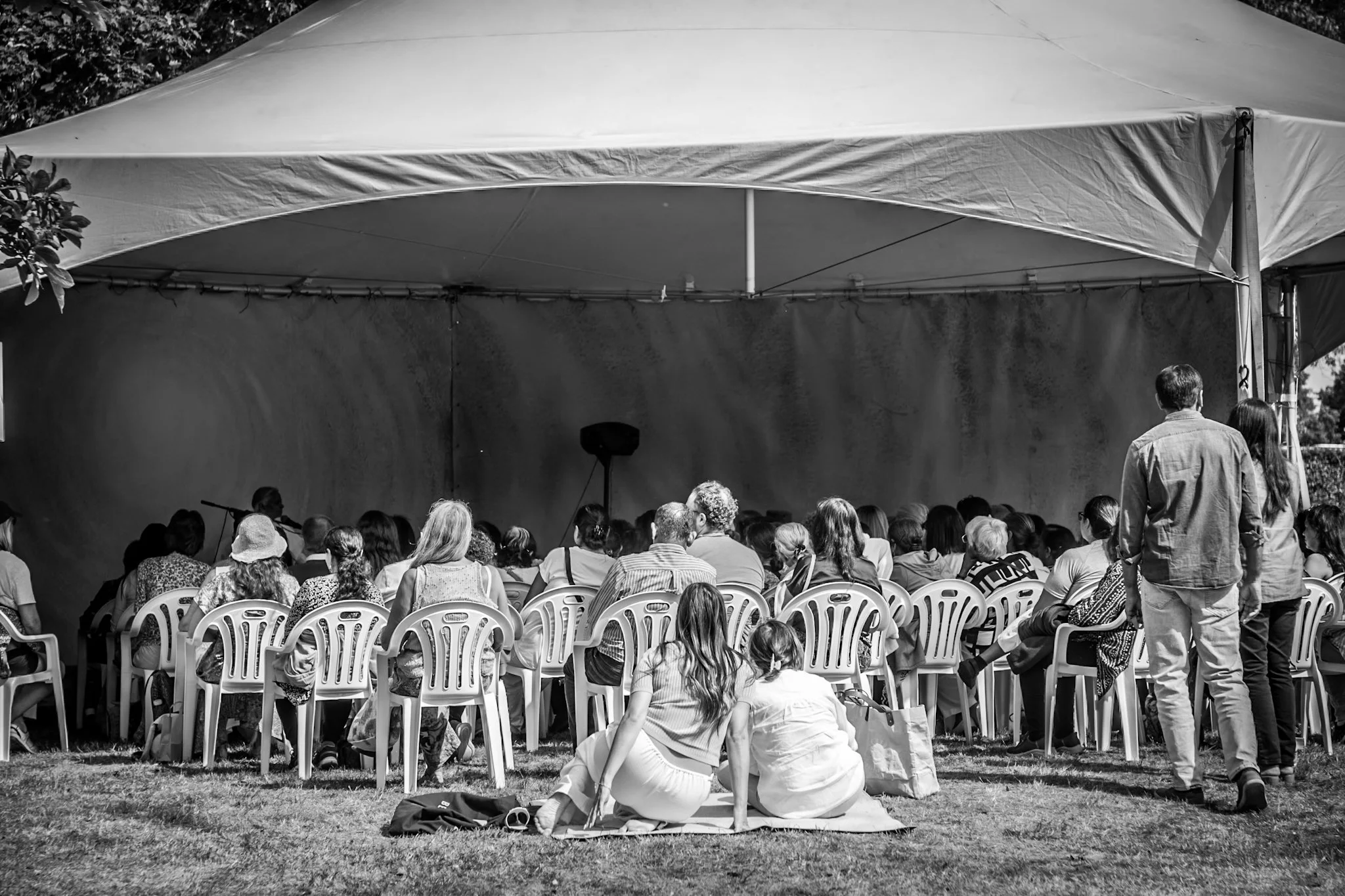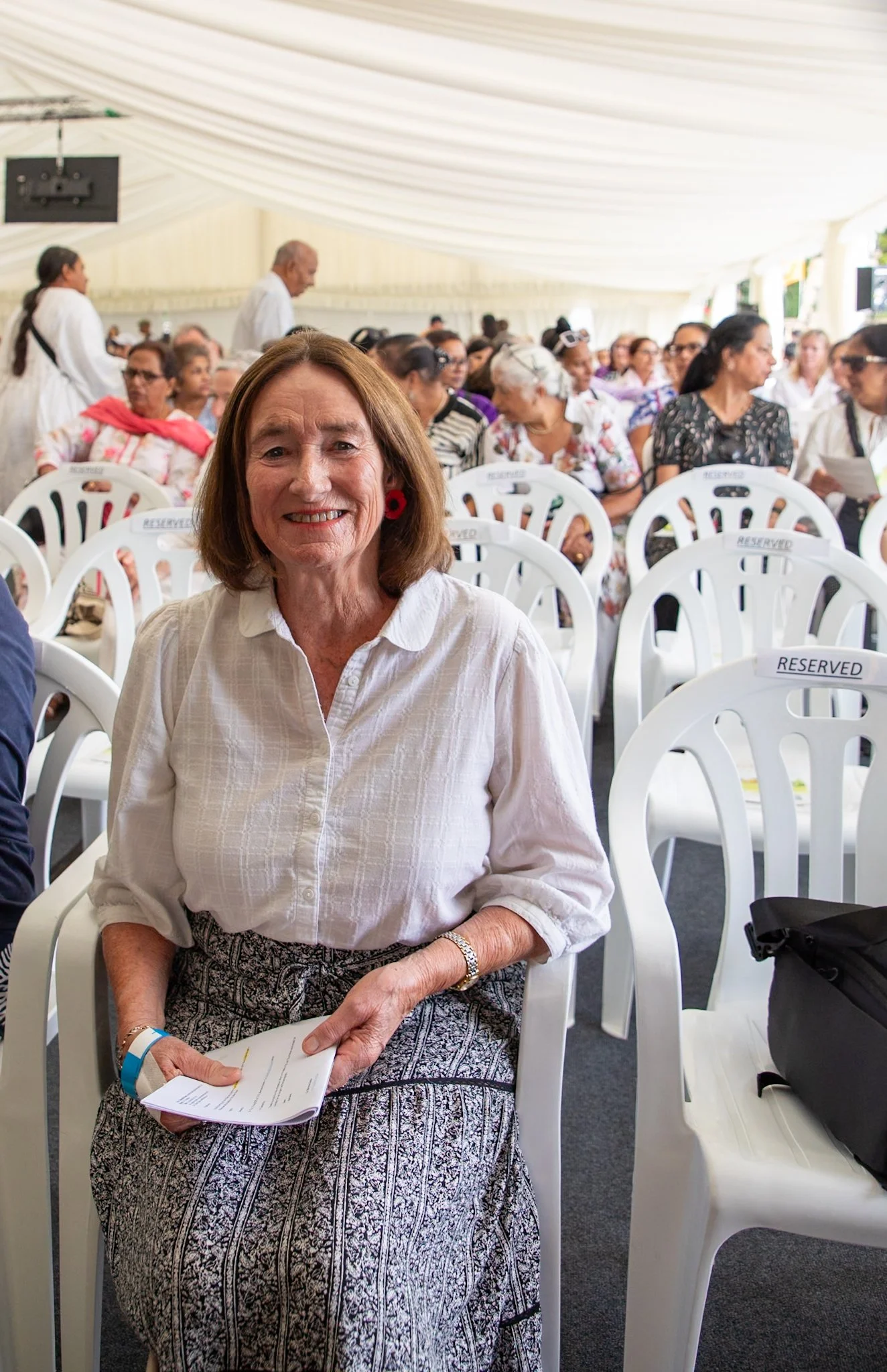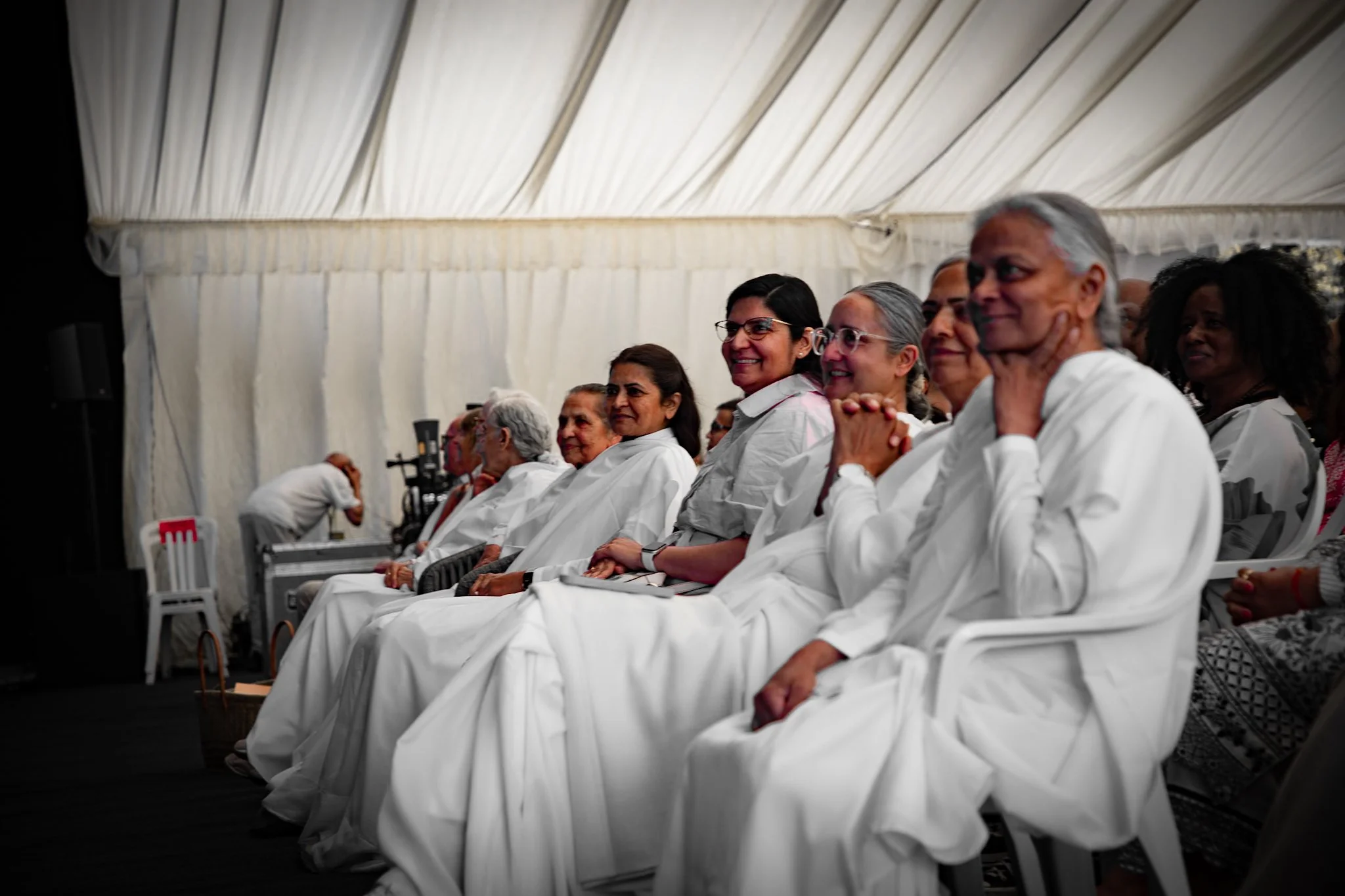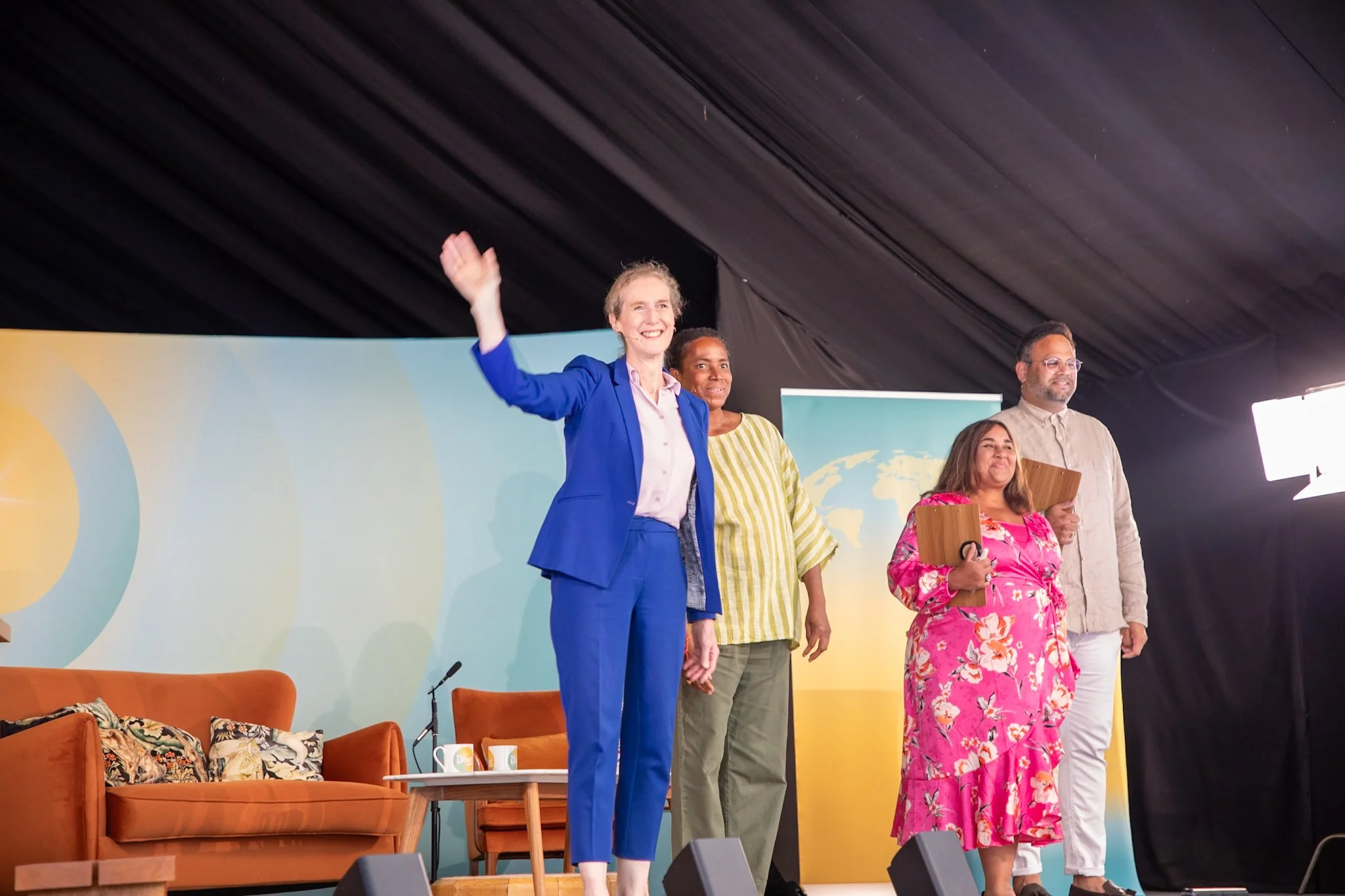Brahma Kumaris
Behind the red-brick houses of the hamlet of Nuneham Courtenay in Oxfordshire lies a secret. Turn off the tree-lined road onto a narrow lane. It winds its way through stunning parkland to a stately house. Usually this is an oasis of calm – The Global Retreat Centre of the Brahma Kumaris.
The Brahma Kumaris (BKs) are a modern spiritual movement with roots in India. This is their west country base. The BKs are formed by a group of gentle women, dressed in white robes, who are members of an organisation teaching raja yoga and meditation while encouraging self-transformation and values-based living. In this peaceful centre, conferences are held, days of teachings and occasional special days, such as the Peace Fest.
Officially known as the Brahma Kumaris World Spiritual University (BKWSU), the movement has its headquarters in Mount Abu, Rajasthan, India, with an outreach to over a hundred countries with over 8,000 centres worldwide. There are men BKs and the organisation was founded in 1937 in Hyderabad, Sindh, by a man known as Dada Lekraj, later called Brahma Baba, but all leaders since his death in 1969 have been women.
Raja Yoga Meditation
Their central practice – not linked to physical postures but a form of meditation focusing on connecting the self (the soul) with God (Shiv Baba). The emphasis is on experiencing peace, purity, love, and bliss.
Soul Consciousness
Every person is an eternal, pure soul.
Problems arise from identifying with the body, roles, or ego.
Supreme Soul (Shiv Baba)
God is understood as a being of pure light and love, beyond birth and death, not worshipped through ritual but through meditation and inner connection.
Beliefs and Teachings
Time
Belief in a repeating cycle of ages (Golden, Silver, Copper, and Iron), with the present as a time of renewal.
Lifestyle
Members often adopt celibacy (even within marriage), vegetarianism, abstinence from alcohol and tobacco, and daily meditation.
Activities
Meditation retreats and free public courses. The BKs have been among the strongest promoters of worldwide meditation events, especially since the 1970s.
In 1978, they launched World Meditation Hour (the third Sunday of every month at 6.30 pm local time), encouraging people everywhere to sit in silent meditation together.
This BK initiative became very influential and is still observed today in many countries.
Interfaith dialogue, environmental initiatives, and programs for personal development.
Publications, radio, and TV programs spreading meditation practices, including World Meditation Day.
UN Affiliation: The Brahma Kumaris have general consultative status with the UN’s Economic and Social Council (ECOSOC).
Dadi Janki
A notable figure within the Brahma Kumaris tradition was Dadi Janki, who lived to 104.
I met Dadi Janki in London in 2016 when I was one of a hundred ‘Women of Spirit’ honoured to celebrate her 100th birthday.
We ranged from writers to social workers, teachers, leaders of spiritual organisations and many of us knew each other. So it was a jolly and convivial gathering.
Dadi Janki herself was the focus of attention – how well was she?
It seemed to me that she was feisty rather than frail, easily holding the attention of the great hall. We were each presented with a certificate and a beautiful scarf as a memento of the special day and our achievements. This had all been a huge surprise to me, as I had had no idea that such an occasion was in store.
Dadi lived for another four years, until 2020 before being succeeded by a collaborative structure, under Dad Gulzar as Chief Administrative Head.
Biography
Born: 1 January 1916, in Sindh (then British India, now Pakistan).
From a young age, she was drawn to spirituality, prayer, and a life of simplicity and in the late 1930s she joined Om Mandali (the original name of the Brahma Kumaris) becoming one of the early and most dedicated followers of Brahma Baba (Lekhraj Kripalani, the founder). In 1937, she formally dedicated her life to spiritual service and community work within the movement.
She was noted for her discipline, compassion, and clarity of thought, quickly becoming a respected teacher of Raja Yoga meditation. In the 1970s, she was sent to London to establish and expand the Brahma Kumaris’ presence in the West. Under her guidance, the movement spread rapidly across Europe, North America, and beyond.
After the death of Brahma Baba in 1969, leadership passed to the group of senior sisters (“Dadijis”). Dadi Janki became the Administrative Head of the Brahma Kumaris in 2007, following the passing of Dadi Prakashmani and she held that position until she died in 2020.
Known worldwide as a teacher of Raja Yoga meditation, she emphasised the connection between the eternal soul and the Supreme Soul (God). Her messages highlighted peace, inner strength, and service to humanity. She spoke at major international forums, including United Nations events on peace, women’s empowerment, and sustainability. Dadi Janki continued to travel, teach, and inspire well into her 90s. She passed away on 27 March 2020 at the age of 104 in Mount Abu, India.
Her work helped transform the Brahma Kumaris from a relatively small Indian spiritual group into a worldwide movement. She left behind countless talks, writings, and personal guidance that continue to inspire people across traditions. It was a privilege to have met her.
Brahma Kumaris Peace Fest: Where stillness meets joy
The customary silence of the Brahma Kumaris Global Retreat Centre (GRC) was shattered that weekend which brought over 2,000 visitors on the first day alone. The sun shone, and cars and buses lined up to disgorge people of all ages taking advantage of the free event.
We were invited to wander around the glorious gardens, enjoying a wide range of events or simply to relax under the massive trees, enjoying coffee, tea or soft drinks. Everyone was warmly welcomed and despite the numbers, the afternoon was truly peaceful. Bookstalls offered a range of spiritual volumes and browsers were welcomed and guided in their choice.
Grounding Meditation
Ellie and I began the afternoon by removing our shoes, closing our eyes and immersing our bare feet in the lush grass of a wooded glade. We allowed our stress to sink into the earth, as we stood in a circle of silence. A wonderfully peaceful way to begin our visit.
We wandered on past a group of people listening to a sitar player, the gentle sounds wafting across the gardens.
Ahead was a tree festooned with brightly coloured origami birds – a Peace Wishes Tree.
Visitors could learn how to make their own cranes using exquisite Japanese paper squares and were encouraged to write a message on it if they chose.
Throughout the afternoon, inspirational talks took place inside the mansion. We decided to join a session of meditation, accompanied by a pianist.
The interior is bright, the main hall lit by enormous chandeliers and smaller rooms are available for respite and discussion groups.
At around 4pm we made our way to the huge marquee and were delighted with our reserved seats in the front row. We settled down for the Light Show, from 4.15 to 6.30. This show, compered by Sunny and Dawn, included interviews with BK Sisters Sidesh, Jayanti and Maureen, as well as rapper Lucky C and Times journalist and writer Neville Hodgkinson.
This is available on YouTube: https://www.youtube.com/watch?v=Xjvawaj3_84


